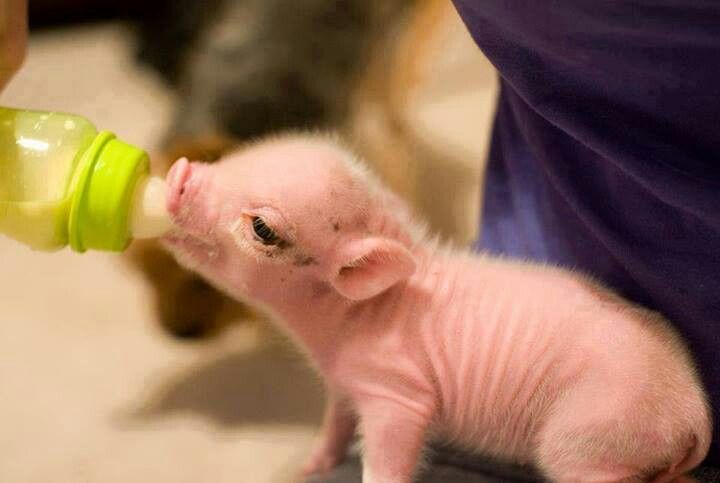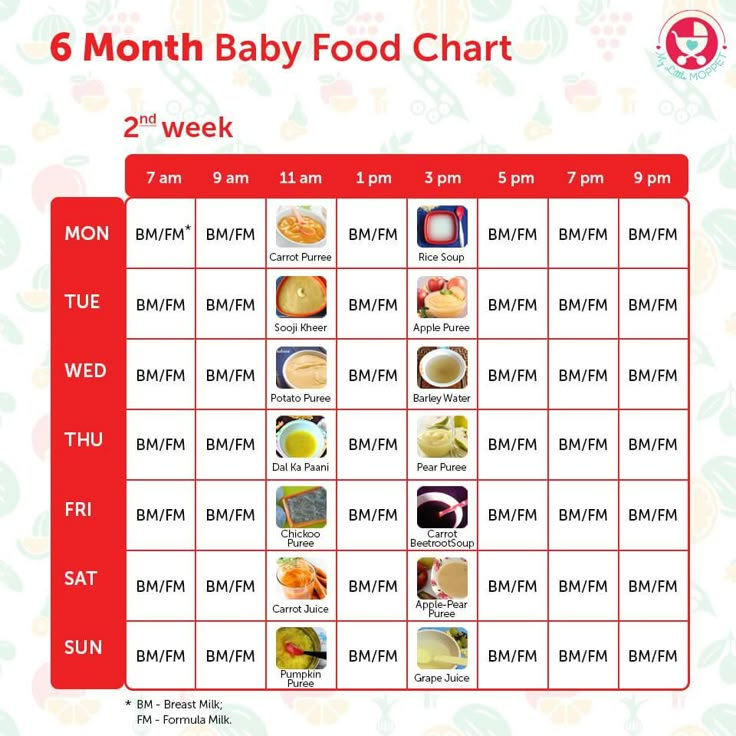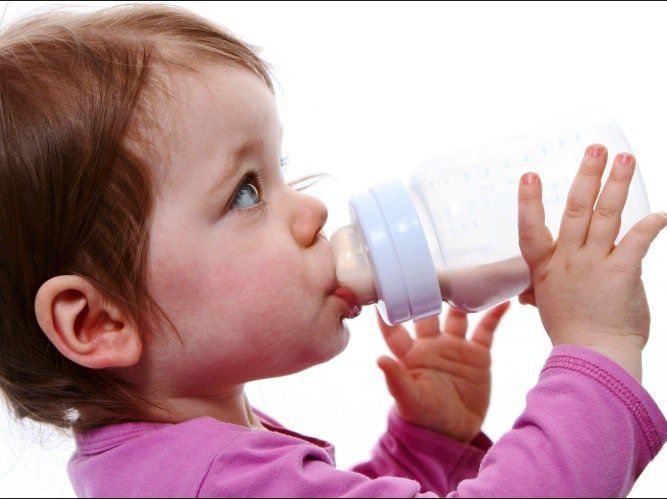Bottle feeding baby animals
Bottle Raise a Baby Animal
Many different reasons exist to bottle raise a baby animal. Sometimes, it’s a matter of necessity, in the case of an orphaned or rejected animal. Sometimes it’s a matter of convenience or desire, such as an ox drover wanting to bond with a potential new team of calves. Someone may bring you an orphan with a sad story, and occasionally people just want the fun of raising a baby animal. No matter the motivation, it’s important to get your bottle baby off to a good start. Here are some things to help you get started in the right direction.
Rejection
Livestock breeding can have its ups and downs. The joy of watching a happy, healthy baby frolicking with its dam is always tempered by the knowledge that the next time might not go so well.
After a difficult birth, sometimes a mother may be too stressed or too weak to properly recognize and mother her baby. Many times after being given a chance to rest and relax, she may go ahead and claim and bond with her baby. If at all possible, give mom and baby a quiet place to chill out for a little while. In rare cases, the mother may be aggressive toward the baby, but fortunately this doesn’t happen very often. Staying with them out of sight so you can intervene if necessary or separating them with a panel that lets them see and smell each other might be enough to get those maternal instincts to kick in. An inexperienced mother with a full, tight udder may want to mother her baby, but be so sore there is no way she’s going to be happy with junior punching around down there. If you can safely milk her out a little to take some of the pressure off, she might be a little more accepting of the idea. But be sure you can do it safely, especially in the case of large hoofstock like cattle, which can kick with amazing accuracy and athleticism.
Save the colostrum-rich first milk, either for this baby or freeze it for future use.
At times, it isn’t obvious if baby is nursing or not. A baby that is latched on and nursing well will stay with it, and not continually be sniffing around looking for the right spot. Also, a baby will sometimes wag its tail enthusiastically when it’s in the right place and enjoying the meal.
Also, a baby will sometimes wag its tail enthusiastically when it’s in the right place and enjoying the meal.
A baby that has nursed adequately will have a plump tummy, feel warm, and not be actively seeking to nurse from anything and everything it comes across. Generally, seeing a meconium — that first, tarry looking baby manure — can indicate that the baby may have nursed, and the digestive system has kicked in. A baby that seems “ganted up” — or hollow in the flank area — might need to be checked out.
On the bottle
Is mom having no part of it for whatever reason? Time to intervene? The first and most important thing in raising a healthy baby is to make sure it gets a good supply of colostrum. Colostrum is the first milk an animal produces; it is loaded with fat, calories and a whole slew of antibodies to give the baby a strong start in life. The good news? Mom produces colostrum for the first couple of days. The bad news? Baby has only a narrow window of a few hours that its gut lining is open and able to absorb all those antibodies. The first eight hours are the optimal window. After that, the gut lining closes up and the ability to make use of the colostrum deteriorates rapidly. After 12 hours it’s less than 50 percent, and after 24 hours, the ability to absorb colostrum is lost entirely.
The first eight hours are the optimal window. After that, the gut lining closes up and the ability to make use of the colostrum deteriorates rapidly. After 12 hours it’s less than 50 percent, and after 24 hours, the ability to absorb colostrum is lost entirely.
If the baby doesn’t get colostrum, it is at risk for severe infections, and will be compromised at throwing off the immunity challenges that will inevitably come its way. This is one reason an animal that comes your way from an outside source may be a challenge, and also a reason to be wary of purchasing babies from a sale barn or livestock auction. Unless you can talk to the previous owner, there isn’t really a good way to know if baby got colostrum or not. It’s hard to resist the challenge, especially when that calf or lamb is so cute, but just be aware of the challenges you may be facing.
If mom has no milk or there is no colostrum for whatever reason, there are several manufactured colostrum supplements, but again, your window to make use of them is narrow.
Tools of the trade
Okay, you have committed to a course of action. There are several things you will need to raise your baby successfully.
One of the most important is, of course, a bottle and a species-appropriate nipple, but don’t just run down to the farm supply store and grab any old milk replacer off the shelf. Different species have different needs, and there are milk replacers formulated for calves, lambs, kids and foals. There are general milk replacers that will work for multiple species, and those are certainly adequate, but if you have the opportunity to select a milk replacer formulated for the animal you are raising, go for it.
For lambs and kids, there are nipples that can slip over an empty soda pop bottle. These plastic bottles are easily available and may help in getting an animal started since you can apply a little pressure to ensure good flow, but glass beer bottles can be more readily disinfected, and will last longer.
Larger calves will require a calf nipple and a calf bottle or pail. Often the rubber in these nipples can be stiff, and smaller or weaker calves may have a hard time getting started with them. Smaller calves can be started on a lamb nipple, but be careful that as the calf gains vigor, he doesn’t pull it off and swallow it. If the flow seems slow at first, you can widen the hole in the nipple, but make sure you don’t open it so much that the milk floods out and you risk aspirating liquid into the baby’s lungs. This can put them at high risk for pneumonia, and if you have a baby that already has its immunity compromised, you may have big problems.
Often the rubber in these nipples can be stiff, and smaller or weaker calves may have a hard time getting started with them. Smaller calves can be started on a lamb nipple, but be careful that as the calf gains vigor, he doesn’t pull it off and swallow it. If the flow seems slow at first, you can widen the hole in the nipple, but make sure you don’t open it so much that the milk floods out and you risk aspirating liquid into the baby’s lungs. This can put them at high risk for pneumonia, and if you have a baby that already has its immunity compromised, you may have big problems.
Milk replacer should be warm when given to the baby. It doesn’t need to be hot, but it should at least be close to the temperature it comes out of the mother. You can warm it in the microwave, over the stove, or make it fresh with hot water each time. Cold milk replacer is not as palatable in the early stages, and they may not drink as much. Generally, after they are going good on the bottle, temperature isn’t as much of an issue, but some babies remain picky all through the bottle-feeding experience. Don’t worry, they will let you know if they have a problem with anything.
Don’t worry, they will let you know if they have a problem with anything.
Some animals will have a distinct preference for a certain type of nipple, a certain temperature or milk replacer, and just about anything else, while others take to the bottle like a duck to water. You may have to experiment a bit with a picky animal, but eventually you will find something that works.
Getting started
At first, your bottle baby may not take to an artificial nipple and milk replacer, especially if they have nursed some from their mother. The replacement just doesn’t smell right, feel right, or taste right.
It may take a little patience while getting them started. Hold smaller babies, like lambs or kids, in your lap, facing forward. Cradle your hand under baby’s chin, and hold the bottle so it’s lined up with baby’s mouth. Guide the nipple into the mouth, but be careful not to hold it at too steep an angle so milk doesn’t flood the baby’s mouth. Let it play with the nipple a while to get the idea.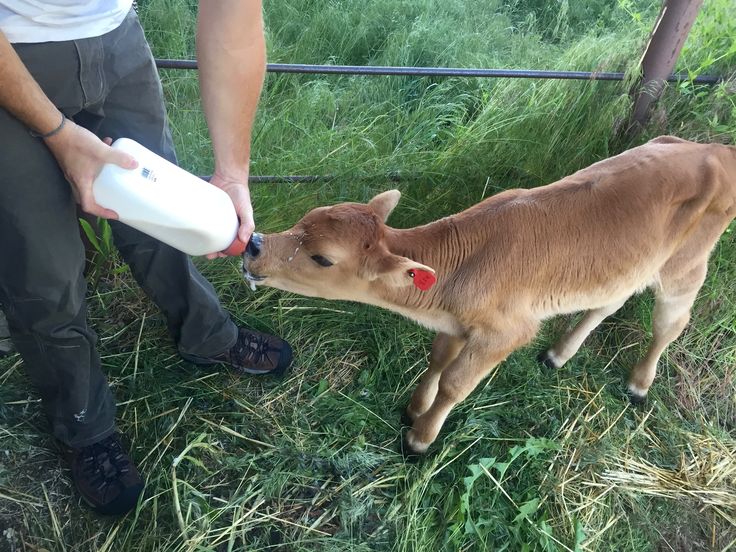 Holding the bottle in line with the mouth makes it more difficult for the baby to play with the nipple and spit it out. If at first it doesn’t want to nurse, wait a couple of hours and try again. It may just not be hungry yet. A healthy baby will hardly ever let itself starve to death.
Holding the bottle in line with the mouth makes it more difficult for the baby to play with the nipple and spit it out. If at first it doesn’t want to nurse, wait a couple of hours and try again. It may just not be hungry yet. A healthy baby will hardly ever let itself starve to death.
If your baby is a ruminant, the milk needs to bypass the rumen, which is undeveloped in newborns. It must go to the abomasum, or true stomach. Fortunately, Mother Nature takes care of this process for us.
When the baby holds its head in the natural nursing position, straight out and extended, and maintains the tension in its throat necessary to nurse, a fold of skin in the esophagus — known as the esophageal groove — closes, causing the milk to bypass the rumen and go straight into the abomasum. Why is this a big deal? In order to properly digest, milk must form clots, removing the water part of the fluid, and then make its way to the small intestine where it can be absorbed. The abomasum contains rennet, the digestive enzyme that helps all this take place; and helps to make great cheese. If it goes directly into the rumen instead of the abomasum, it has to clot up there, which can take up to three hours longer, and make its way back to the abomasum anyway.
If it goes directly into the rumen instead of the abomasum, it has to clot up there, which can take up to three hours longer, and make its way back to the abomasum anyway.
The rumen is pretty much nonfunctional in the first couple weeks of life. In the ruminant baby, the abomasum is the larger of the two compartments, and the rumen is a small percentage of its mature size. You will see the baby start nibbling at forage and feed at a pretty young age, though. This helps the bacteria in the rumen start to develop, even though it doesn’t do a huge share of the workload right away.
No pushing
One of the key questions in bottle raising a baby is if you can maintain the discipline necessary to keep it from becoming a pushy problem child. A mother will correct the minor breaches in behavior with a bite, kick or head toss. A bottle baby will come to recognize you as a food source, and begin to make demands with a head butt or hoof strike. Correct these breaches with a firm tap on the nose, or a swat to the shoulder or barrel. Behavior that’s cute when a baby calf is a hundred pounds won’t be so cute when he weighs a thousand. Be firm enough to gain his respect and attention, but gentle enough not to hurt or truly make him fearful.
Behavior that’s cute when a baby calf is a hundred pounds won’t be so cute when he weighs a thousand. Be firm enough to gain his respect and attention, but gentle enough not to hurt or truly make him fearful.
If it’s an option, leave baby with the rest of the herd or flock. Even if mama isn’t around, they can help teach your baby the rules of being a good citizen, and you won’t have to worry about introducing the baby to the rest of the herd or flock when it’s older. If your baby is by himself, it’s even more important that you teach it respect and handle it according to what works for that species. Llamas and alpacas, for example, are known for developing behavioral problems later in life if they aren’t properly socialized. If you have any questions about exactly what is or isn’t proper, find someone who is experienced in raising whatever species you are dealing with, and ask for advice. The result of not properly socializing a bottle baby could be an animal that you may have to get rid of because it has become dangerous to you or your family.
Despite the hard work and challenges, bottle raising any animal can be rewarding. There’s nothing like the feeling of watching an animal grow and thrive, and know you had a significant part in it. Just be sure you have the tools necessary to do it right.
Read more: One blogger’s take on how to save an orphaned calf.
Callene Rapp has successfully bottle raised babies of many species, but whenever possible, she prefers to convince the mothers to do the work for her. Callene works as a zookeeper in the Children’s Farms of the Sedgwick County Zoo, and she and her husband, Eric, have small herds of Pineywoods cattle and Navajo-Churro sheep on their farm in Kansas.
Tips on Bottle Feeding Calves, Lambs and Goats | Brazos Feed & Supply, Inc.
Share
"Tips on Bottle Feeding Calves, Lambs and Goats"- Share this:
- Share on Facebook
- Pin on Pinterest
- Tweet on Twitter
No matter what type of livestock you raise, bottle feeding hungry youngsters is occasionally necessary. It doesn't have to be a hassle, however, and there are many ways to make bottle feeding calves, lambs and goats easy and enjoyable for both you and the animals.
It doesn't have to be a hassle, however, and there are many ways to make bottle feeding calves, lambs and goats easy and enjoyable for both you and the animals.
Why Bottle Feed?
While regular nursing will be best for your livestock, there are several instances where the extra work and effort of bottle feeding is desirable. Young calves, lambs and goats may be orphaned when the mother dies in a difficult birth or from post-partum infections, or a female may lack nursing or mothering instincts and could reject her offspring. Some breeders prefer the bonding experience they can have by bottle feeding livestock, especially if the animals are destined to be around for years, such as a working ox team or animals that will be used for wool or milk rather than raised for meat. Bottle feeding livestock can also be a great project for kids, as part of 4H or scouting work or even for a science fair or other school project.
By bottle feeding young livestock, it is easier to ensure each animal receives the proper nutrition critical in those first few hours and days of life, especially the rich colostrum filled with essential antibodies. If an animal naturally nurses it will receive that nourishment, but if bottle feeding is the alternative, the animal's weight, health and nutritional intake can be more closely monitored to help it grow strong and thrive along with its naturally-nursing peers.
If an animal naturally nurses it will receive that nourishment, but if bottle feeding is the alternative, the animal's weight, health and nutritional intake can be more closely monitored to help it grow strong and thrive along with its naturally-nursing peers.
Tips for Bottle Feeding Livestock
While different types of nursing livestock have different needs, these basic tips can help you be sure you are feeding any hungry animals appropriately.
- Always use species-appropriate nipples for each bottle. The size and shape of animals' mouths vary, as well as their sucking actions. The right nipple will feel more comfortable to the animal and will help them nurse more easily. Check that the opening is clear and does not stick, and hold the bottle at the right angle for the animal to nurse best.
- Opt for the right milk replacer to offer the proper nutrition. Different animals have different dietary needs, especially when very young. Choosing a milk replacement formula specially geared toward the animal's needs will help give it the proper nourishment for strong, healthy growth even without natural mother's milk.
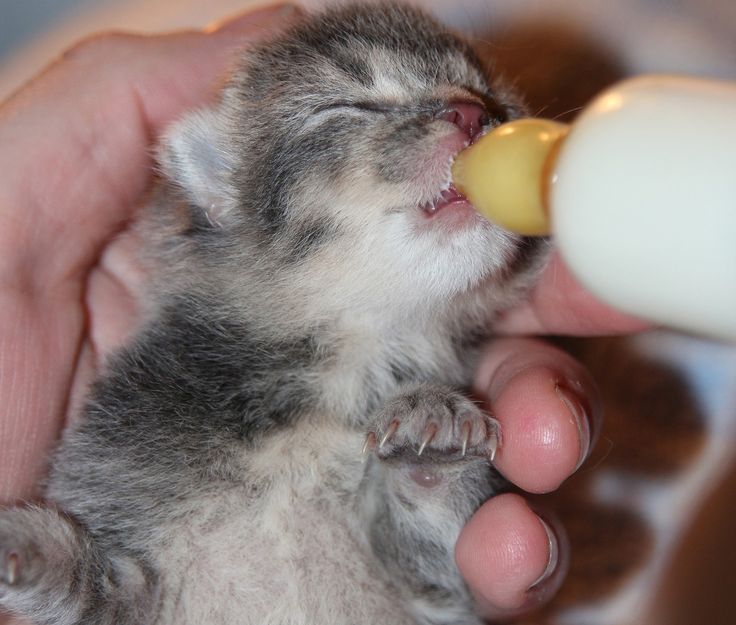
- Warm the milk replacer before each feeding. Baby animals will nurse most easily when the milk is close to the body temperature of their mother, but it should not be so hot that it can cause burns to sensitive young mouths. Warm formula will also be more palatable and will flow more easily for good nursing.
- Feed young animals the proper amount and frequency for their nutritional needs. The exact amount of formula they need through bottle feeding will depend on the animal's species, weight, general health and whether or not the feeding is their only nutrition or is supplemental to weak nursing. Local climate and temperatures can also affect the amount of food needed to ensure the animal has enough calories to maintain adequate body heat.
- Keep all bottle feeding equipment clean, and sterilize bottles, nipples and other tools after each feeding. This is essential even if the gear is only used to bottle feed a single animal, as young nursing animals are especially vulnerable to bacteria and infections from dirty tools.

- Be firm but gentle when bottle feeding animals, especially as they get stronger and more insistent with head butting, pushing and other behaviors. Correct them consistently to prevent these behaviors from developing into problems that will be difficult to solve as the animals grow. Do not, however, overreact to their instinctive behaviors, or you risk creating a sense of fear associated with bottle feeding that can lead to undereating.
- If you must bottle feed several animals, consider a multi-station feeding trough or similar feeding "bar" with several nipples. This can be a faster, more efficient way to bottle feed a number of animals once they are nursing well and no longer need as much individual encouragement to eat.
- Provide good socialization for the animal outside of feeding time. While baby calves, lambs and goats are adorable and may seem like members of a human family, they need to learn to be proper animals and to get along with their species herd. Allow them to socialize with other animals whenever possible so they can learn to use their native instincts more appropriately.

Bottle feeding livestock can be a very rewarding and enriching experience as you help an animal go from a weak, hungry newborn to a fat, bouncing toddler. By taking the proper steps to bottle feed calves, lambs and goats appropriately, every newborn can have a good chance for that happy youth.
"Mom" for a roe deer
https://ru.sputnik.kz/20220616/spaseniekosulenok-botsad-petropavlovsk-25557673.html Petropavlovsk
In the Botanical Garden of Petropavlovsk, a roe is nursed to
2022-06-16T07: 39+0600
2022-06-16T07: 39+0600
2022-06-16T07: 42+0600
Kosul 9,0002 Kosul
Petropavlovsk
Botanical Garden
/html/head/meta[@name='og:title']/@content
/html/head/meta[@name='og:description']/@content
https://sputnik.kz/img/07e6/06/10/25557341_0:47:1156:697_1920x0_80_0_0_2371622224f9a4284ea07397e40210f1.jpg
PETROPAVLOVSK, June 16 - Sputnik. A roe deer cub, whose mother was hit by a car, was sheltered in the botanical garden of Petropavlovsk, a Sputnik Kazakhstan correspondent reports. According to Dmitry Butenko, a hunting specialist of KSU Forestry Kyzylzharskoe, a young couple found a roe deer near the highway near the village of Penkovo, Kyzylzhar district. In the forestry, the roe deer was nicknamed Yegor . According to experts, he is not yet a month old, a maximum of three weeks old. Anna Lyashenko, a florist-landscapist of the botanical garden, volunteered to take care of the baby. She says that she could not resist the sight of this spotted miracle. "Mom" for a roe deer. During the week of living in a new place, Yegor has already got used to his wet nurse and is especially happy about her arrival. "We have breakfast at 9hours. When I come, he recognizes me, jumps, rejoices. He knows what to feed now. I sit down, take him on my knees and feed him. I add salt to milk, they need salt. Now he eats only milk, but his front teeth are already climbing, itching - he is trying to nibble on the nipple. When the teeth come out, he will slowly start chewing the grass, he is already trying,” the nurse explains.
According to Dmitry Butenko, a hunting specialist of KSU Forestry Kyzylzharskoe, a young couple found a roe deer near the highway near the village of Penkovo, Kyzylzhar district. In the forestry, the roe deer was nicknamed Yegor . According to experts, he is not yet a month old, a maximum of three weeks old. Anna Lyashenko, a florist-landscapist of the botanical garden, volunteered to take care of the baby. She says that she could not resist the sight of this spotted miracle. "Mom" for a roe deer. During the week of living in a new place, Yegor has already got used to his wet nurse and is especially happy about her arrival. "We have breakfast at 9hours. When I come, he recognizes me, jumps, rejoices. He knows what to feed now. I sit down, take him on my knees and feed him. I add salt to milk, they need salt. Now he eats only milk, but his front teeth are already climbing, itching - he is trying to nibble on the nipple. When the teeth come out, he will slowly start chewing the grass, he is already trying,” the nurse explains. to bring gifts for him. "Here, they gave a bottle for feeding and powdered goat's milk - it is the most suitable for Yegorka, but cow's milk also has everything necessary for normal growth," says Anna Lyashenko. Such gifts in the botanical garden are accepted with great gratitude. Roe deer are fed every four hours. Now he drinks more than a liter of milk a day. With growth, he will drink less often, but more. Chance of freedom Egor will be able to stay on the territory of the botanical garden until he grows up. It will be cramped for an adult male in the aviary. Over the future a new guest is still being considered. One of the options is to transfer the Abakshino recreation center, where there are spacious enclosures, to the zoo. But it is quite possible that they will try to release to freedom. By the way, Egor is not the only roe deer who found shelter in the Botanical Garden. A roe deer named Maya has been living here for the second year. Quite a crumb it was brought here by compassionate pensioners.
to bring gifts for him. "Here, they gave a bottle for feeding and powdered goat's milk - it is the most suitable for Yegorka, but cow's milk also has everything necessary for normal growth," says Anna Lyashenko. Such gifts in the botanical garden are accepted with great gratitude. Roe deer are fed every four hours. Now he drinks more than a liter of milk a day. With growth, he will drink less often, but more. Chance of freedom Egor will be able to stay on the territory of the botanical garden until he grows up. It will be cramped for an adult male in the aviary. Over the future a new guest is still being considered. One of the options is to transfer the Abakshino recreation center, where there are spacious enclosures, to the zoo. But it is quite possible that they will try to release to freedom. By the way, Egor is not the only roe deer who found shelter in the Botanical Garden. A roe deer named Maya has been living here for the second year. Quite a crumb it was brought here by compassionate pensioners. It was in May - that's why they gave her the appropriate nickname. However, the employees of the botanical garden also got drunk with the baby a lot: the cub was very small and did not want to drink from a bottle, Maya had to be fed through force. But, fortunately, the roe deer managed to get out. Alone in the field is not always an orphan. However, experts warn: not always the cubs of wild animals found in nature without a mother are orphans and need to be saved. A roe deer can have two or three babies at once. Immature roe deer cannot keep up with their mother and run away in case of danger. Therefore, she deliberately leaves her children in different places. The cubs lie in the grass or bushes, curled up in a ball - this way the warmth is better preserved.
It was in May - that's why they gave her the appropriate nickname. However, the employees of the botanical garden also got drunk with the baby a lot: the cub was very small and did not want to drink from a bottle, Maya had to be fed through force. But, fortunately, the roe deer managed to get out. Alone in the field is not always an orphan. However, experts warn: not always the cubs of wild animals found in nature without a mother are orphans and need to be saved. A roe deer can have two or three babies at once. Immature roe deer cannot keep up with their mother and run away in case of danger. Therefore, she deliberately leaves her children in different places. The cubs lie in the grass or bushes, curled up in a ball - this way the warmth is better preserved.
ru_KK
Sputnik Казахстан
+74956456601
MIA „Rosiya Segodnya“
1920
1080
true
1920
1440
true
https://sputnik. kz/img/07e6/06/10/25557341_0:0:1156:867_1920x0_80_0_0_c9b518877c929e6673680b345b4ff2ae.jpg
kz/img/07e6/06/10/25557341_0:0:1156:867_1920x0_80_0_0_c9b518877c929e6673680b345b4ff2ae.jpg
1920
1920
true
Sputnik Казахстан
According to Dmitry Butenko, a hunter from KSU "Forestry of Kyzylzharskoe", a young couple found a roe deer near the highway near the village of Penkovo, Kyzylzhar region.
© Sputnik / Elena BerezhnayaEgorka, an orphaned deer cub, is cared for in the Petropavlovsk botanical garden
Yegorka, an orphaned deer cub, is cared for in Petropavlovsk Botanical Garden
© Sputnik / Elena Berezhnaya
contacted the botanical garden and agreed to transfer it here, because we know that the employees of the garden have experience in nursing cubs of wild animals. Now the baby lives here, and we bring milk to him and visit him, "said Dmitry Butenko.
In the forestry, the roe deer was called Egor. According to experts, he is not yet a month old, a maximum of three weeks old. Anna Lyashenko, a florist-landscapist of the botanical garden, volunteered to take care of the baby. She says she could not resist the sight of this spotted miracle.
Anna Lyashenko, a florist-landscapist of the botanical garden, volunteered to take care of the baby. She says she could not resist the sight of this spotted miracle.
© Sputnik / Elena Berezhnaya Kormilitsa for Kosulka Anna Lyashenko
Mesulent Anna Lyashenko
© Sputnik / Elena Berezhnaya
"Mommy"
"Cubs Kosuli, I grew up for the first time. But since I grew up in the village ", then I have a lot of experience in feeding domestic goats, calves, foals - there have been different cases. The principle is the same with everyone: you take a bottle of milk and feed it, as a mother usually feeds a child," says Anna Lyashenko.
After a week of living in a new place, Yegor has already got used to his nurse and is especially happy about her arrival.
"We have breakfast at 9 o'clock. When I come, he recognizes me, jumps up, rejoices. He knows that I will feed now. I sit down, take him on my knees and feed him. I add salt to milk, they need salt. Now he eats only milk , but the front teeth are already climbing, itching - he is trying to gnaw on the nipple. When the teeth come out, he will slowly start chewing grass, he is already trying, "explains the nurse.
Now he eats only milk , but the front teeth are already climbing, itching - he is trying to gnaw on the nipple. When the teeth come out, he will slowly start chewing grass, he is already trying, "explains the nurse.
© Sputnik / Elena BerezhnayaOrphaned reindeer Egorka is taken care of in the Botanical Garden of Petropavlovsk
Orphaned reindeer Egorka is taken care of in the Botanical Garden of Petropavlovsk
© Sputnik / Elena Berezhnaya
After breakfast Egor has a walk.
"Let's go for a walk with him, while there are few people in the yard, so as not to be frightened. He runs after me with his tail. He doesn't run far from me. If he falls behind, he runs and calls me "mee". on the street on the grass. Then I put them to sleep, and after a while I come back to feed them. When I’m a little older, we’ll start releasing them into the summer aviary in the backyard so that we get vitamin D, eat grass, and they need to dig deeper in the ground, "says Anna.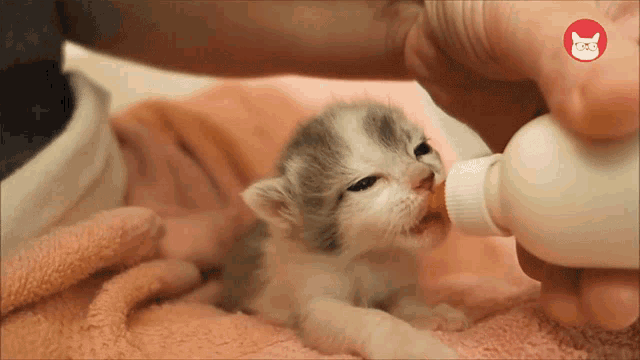
The botanical garden supplies Egor with milk from the forestry. And now the caring townspeople, who learned that an orphan had appeared in the garden, began to bring gifts for him.
"They gave me a feeding bottle and powdered goat's milk - it's the most suitable for Yegorka, but cow's milk also has everything you need for normal growth," says Anna Lyashenko.
Such gifts are received with great gratitude in the botanical garden.
© Sputnik / Elena BerezhnayaEgorka, an orphaned reindeer, is cared for in the botanical garden of Petropavlovsk
Orphaned deer Yegorka is being cared for in the botanical garden of Petropavlovsk
© Sputnik / Elena Berezhnaya
Roe deer is fed every four hours. Now he drinks more than a liter of milk a day. With growth will drink less often, but more.
A chance to be free
Yegor will be able to stay on the territory of the botanical garden until he grows up. An adult male in an aviary will be cramped. The future of the new guest is still being discussed. One of the options is to transfer the Abakshino recreation center to the zoo, where there are spacious enclosures. But it is quite possible that they will try to release it into the wild.
The future of the new guest is still being discussed. One of the options is to transfer the Abakshino recreation center to the zoo, where there are spacious enclosures. But it is quite possible that they will try to release it into the wild.
© Sputnik / Elena BerezhnayaOrphaned reindeer Yegorka is being cared for in the Petropavlovsk botanical garden
Orphaned deer Yegorka is being cared for in the Petropavlovsk botanical garden
© Sputnik / Elena Berezhnaya
track," Dmitry Butenko reflects.
By the way, Yegor is not the only roe deer who found shelter in the Botanical Garden. A roe deer named Maya has been living here for the second year. Quite a crumb it was brought here by compassionate pensioners. It was in May - that's why they gave her the appropriate nickname. However, the employees of the botanical garden also got drunk with the baby a lot: the cub was very small and did not want to drink from a bottle, Maya had to be fed through force. But, fortunately, the roe deer managed to get out.
Alone in the field is not always an orphan
However, experts warn that wild animals found in nature without a mother are not always orphans and need to be saved.
A roe deer can have two or three babies at once. Immature roe deer cannot keep up with their mother and run away in case of danger. Therefore, she deliberately leaves her children in different places. The cubs lie in the grass or bushes, curled up in a ball - this way the warmth is better preserved.
© Sputnik / Elena BerezhnayaEgorka, an orphaned deer, is cared for in the Petropavlovsk botanical garden
Yegorka, an orphaned deer, is cared for in the Petropavlovsk Botanical Garden
© Sputnik / Elena Berezhnaya
times a day to feed milk and lick.Therefore, if you saw a baby roe deer lying alone in the grass, this does not mean that the mother abandoned him.Most likely, she is somewhere nearby and will come after a while.No need to stroke the baby or pick up - after that, the mother may not accept the cub, the smell of a person will scare her away, "Anna Lyashenko warns.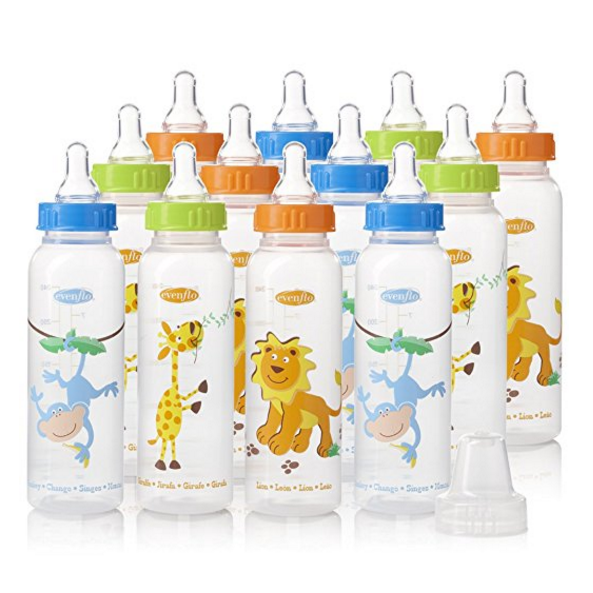
How to Feed Your Puppy
Since the article on teenage pet nutrition was published, we've received a lot of questions about feeding newborn babies. We have already published an article about "baby" kittens, and today we will talk about puppies.
If the mother dog is nearby, then the problem is solved by itself, but, unfortunately, it happens otherwise. Feeding newly born puppies has its own specifics and, first of all, depends on age.
Newborn puppies (0-2 weeks old)
At this tender age, there is nothing better for a puppy than mother's milk. Feeding meat or other "adult" food can kill a pet, even if the cub eats the food offered to him with appetite. If the mother is not around, try to find a nurse dog (ask your friends: perhaps someone in the house has recently had puppies). Another option is to look for a bitch with a false pregnancy. Such a deviation sometimes occurs in dogs, and one of its symptoms is the production of milk in the absence of puppies.
If you can't find a wet nurse, buy dry dog milk substitute. Remember that puppies (like babies) have their own feeding schedule. So, immediately after birth, puppies need to be given food every 2 hours (both day and night), by the end of the second week, the number of feedings can be reduced to 6-8 times a day, and by the end of the first month of life - 5-6 times (look for details on the package of powdered milk). By the way, not only the mixture should be warm, but also the feeding bottle itself (so it will more resemble a puppy's mother).
After eye opening (2-8 weeks)
By this time, the puppy begins to take an interest in what is happening around. The milk diet must be continued, gradually introducing other foods into the pet's diet. For starters, wet puppy food is optimal, diluted with warm boiled water to the consistency of liquid sour cream. Remember that this is just complementary foods: at first, such food should be given little by little, carefully monitoring the well-being and stool of the puppy.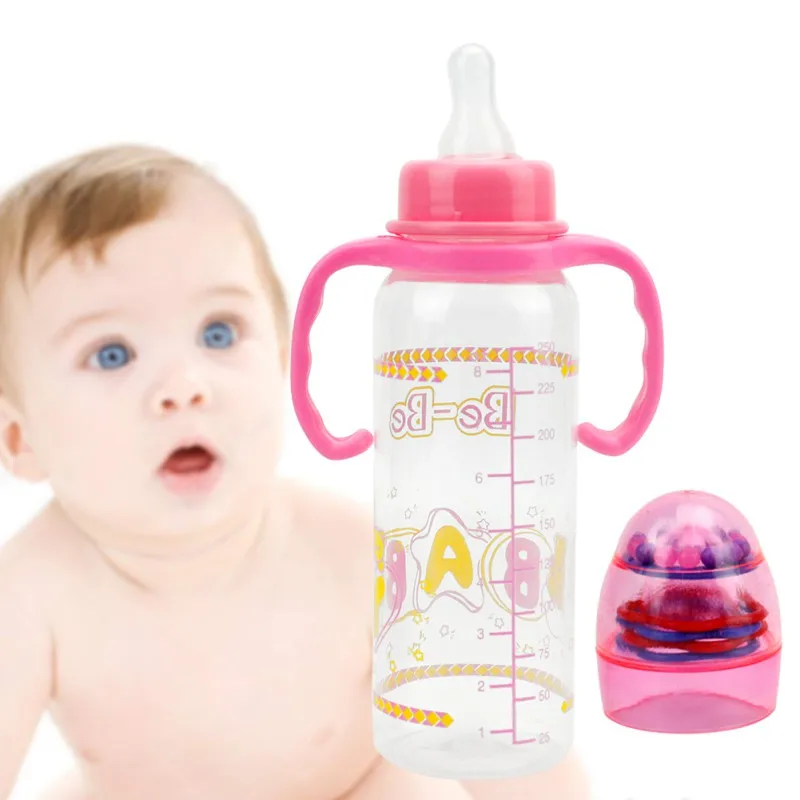 Another option is soaked dry food. The restrictions are the same: we introduce new food little by little, we monitor the reaction to complementary foods.
Another option is soaked dry food. The restrictions are the same: we introduce new food little by little, we monitor the reaction to complementary foods.
What brand of diet should I use? Obviously it should be holistic puppy food. When choosing a particular brand, keep in mind that taste preferences are formed early in life. In other words, what kind of food you teach your puppy to, this is how he will eat when he grows up.
Feeding poor quality food during the training phase can lead to vitamin and nutrient deficiencies, which will affect the health of an adult dog.
Already big… (over 8 weeks)
By this age, the puppy should completely give up liquid nutrition (whether it be mother's milk or a substitute). His diet may consist entirely of canned food or soaked dry food. By this time, you can begin to give the baby dry granules "in its original form" to introduce him to a new type of food. We remind you that at first you need to monitor whether the puppy chews them well. Also be sure to provide constant access to clean water.
Also be sure to provide constant access to clean water.
In conclusion, it is acceptable to give cow's milk to newborn puppies, although this is not the best idea. Despite the fact that dogs tolerate such food better than other animals, a mismatch in the composition can cause problems with the gastrointestinal tract in a pet. But what to do when it comes to life and death (this happens, for example, if a puppy appeared in the house suddenly, and dry milk replacer will be brought only tomorrow)? You will have to make do with hand tools. Use whole cow's milk or unsweetened infant formula (but they have less fat and protein than a puppy needs, so start supplementing as soon as possible).
Remember, there are two main dangers for newborn puppies: dehydration and constipation. So first of all, it is important to water the pet. A large (10 ml) plastic syringe with the needle removed is perfect for feeding animals. It can also be used to give a puppy a milk replacer (although it is still better to purchase a special bottle).